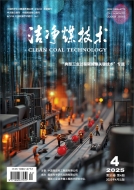Sodium-ion batteries (SIBs) have attracted significant attention as energy storage devices,while the anode material,whichrepresents a crucial component of SIBs,has emerged as a central point of investigation in related research. The low-ash coal tar pitch,a by-product of the coal chemical industry,as a raw material for further research. The preparation of pitch based hard-soft carbon compositematerial was achieved by mixing the coal tar pitch directly with phenolic resin and subjecting it to a high-temperature carbonizationprocess. The resulting materials were successfully applied to SIBs. The results of the SEM,TEM,XRD,Raman,XPS and FTIR testsdemonstrate that phenolic resin have the ability to effectively inhibit the excessive graphitization of pitch during high temperatures.Furthermore,pitch can also repair irreversible defects created by phenolic resin during the carbonization process. Meanwhile,the cross-linking can occur between pitch and phenolic resin during the carbonization process. This phenomenon is conducive to the formation of pseudo-graphite structure in the composite materials,which results in the creation of additional adsorption and intercalation sites. As themass ratio of pitch to phenolic resin increased gradually,the pseudo-graphitic structure content of the composites displayed an upwardtrajectory,followed by a decline. The composite material,comprising a mass ratio of 1∶4 (LF−1∶4),exhibited the highest pseudo-graphite structure content,at 32.88%. This was superior to the 21.28% observed in the material produced by direct heating of pure pitch(LQ) and the 27.08% observed in the material produced by direct carbonization of pure phenolic resin (FQ). The electrochemicaltests,including constant-current charge/discharge and cyclic voltammetry,have demonstrated that the composite material of coal tar pitchand phenolic resin exhibited superior sodium storage performance. The hard-soft carbon composite material had an initial coulombicefficiency of 80.87% and a reversible capacity of 249.10 mAh/g with a pitch to phenolic resin ratio of 1∶4 (LF−1∶4),which had asignificant advantage over the material obtained by direct carbonization of pure coal tar pitch (LQ),which was 48.39% and 90.39mAh/g,and pure phenolic resin (FQ) of 73.46% and 230.48 mAh/g. In contrast,the full cell prepared using LF−1∶4 displayed areversible capacity of 251.37 mAh/g,with an energy density of 214 Wh/kg.
Preparation and sodium storage performance of hard-softcarbon composite materials
 2025 No. 01
2025 No. 01
 460
460 158
158

Authors:
- XU Jiahao
- ZHANG Zhaohua
- LIU Yuhao
- ZHAO Wei
- LI Xiuchun
- JIA Jianbo
- HUANG Guangxu
- XING Baolin
- ZHANG Chuanxiang

Unit:
- Henan Key Laboratory of Coal Green Conversion,College of Chemistry and Chemical Engineering,Henan Polytechnic University
- Henan Polytechnic University Ordos Research Institute of Clean Coal Development and Utilization
- Hami Vocationaland Technical College
- State Collaborative Innovation Center of Coal Work Safety and Clean-efficiency Utilization
- China Coal Huali Xinjiang Carbon Technology Co.,Ltd.

Abstract:

Keywords:
- coal tar pitch
- phenolic resin
- negative electrode material
- sodium ion battery
- electrochemical performance

Citation format:
徐家豪(1999—),男,河南濮阳人,硕士研究生。E-mail:212212010011@home.hpu.edu.cn

Chart:

Articles:
--

Citation format:
XU Jiahao,ZHANG Zhaohua,LIU Yuhao,et al. Preparation and sodium storage performance of hard-soft carboncomposite materials[J].Clean Coal Technology,2025,31(1):78−87.

-
Executive director
China Coal Science and Industry Group Co., Ltd
-
Sponsored by
Coal Science Research Institute Co., Ltd
Coal Industry Clean Coal Engineering
Technology Research Center -
Editor in Chief
XIE Qiang
-
Vice Editor-in-Chief
YU Chang
SHI Yixiang
ZHAO Yongchun
DUAN Linbo
CAO Jingpei
ZENG Jie -
Publication Frequencies
Monthly
-
ISSN
1006-6772
-
CN
11-3676/TD
Covered by
- CSTPCD
- RCCSE(A+)
- AJ
- EBSCO host
- Ulrichsweb
- JST
- Scopus
Contact us
New Media
-
 Meichuanmei
Meichuanmei -
 Clean Coal Technology
Clean Coal Technology -
 Online Journals
Online Journals








 Submission system
Submission system Copyright agreement
Copyright agreement Instructions for authors
Instructions for authors